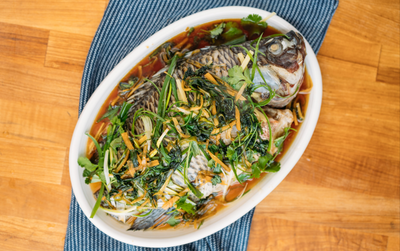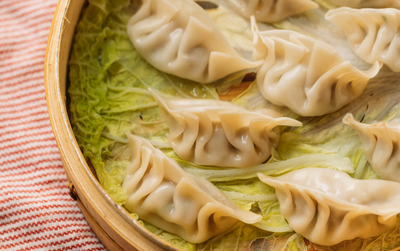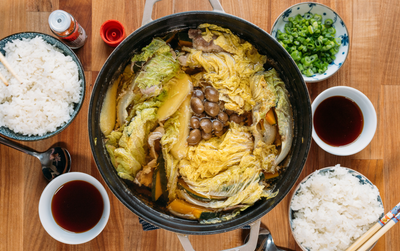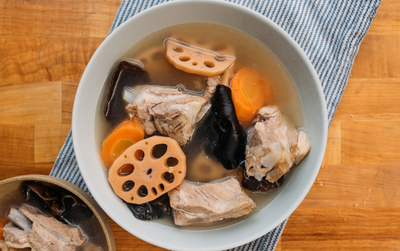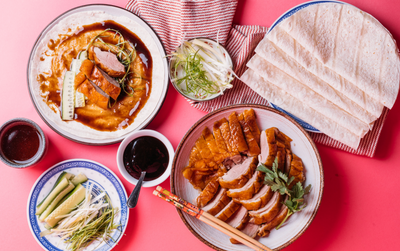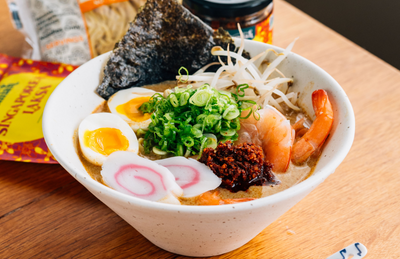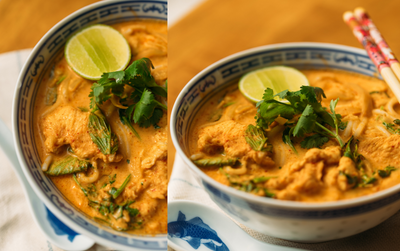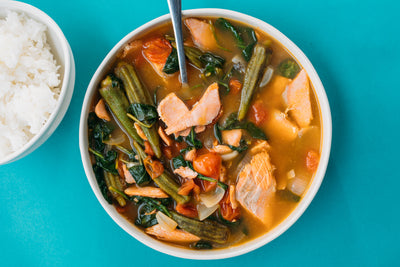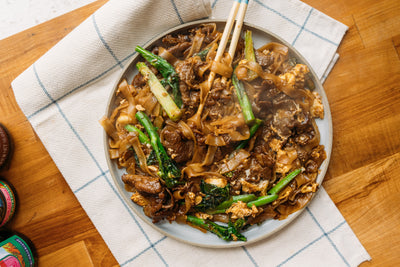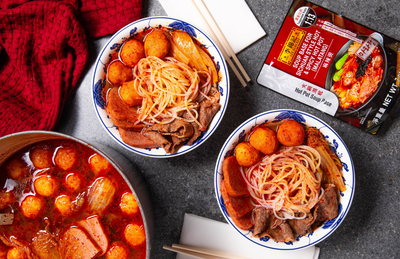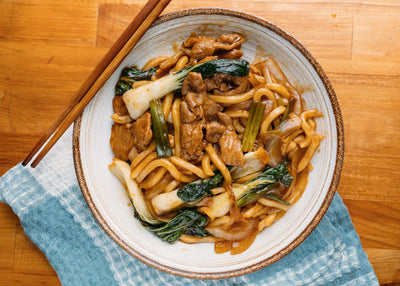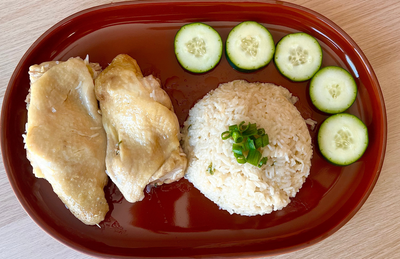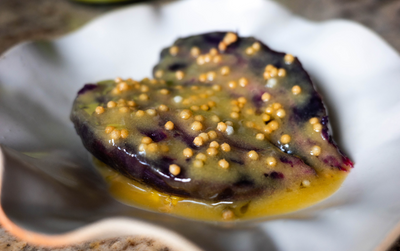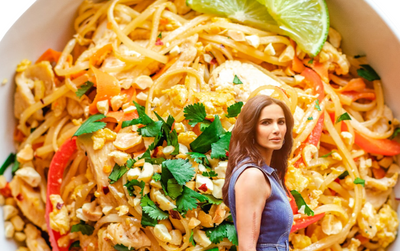12 Classic Asian Spices You Should Have On Hand
Spices and herbs are the backbones of any style of cuisine. Sure, salt and pepper carry a lot of the load, but without those other spices in our arsenal, a lot of our food would lack the unique personality that makes us love them so much.
What would curry even be without the colorful earthy palette of spices that define its unique flavor?
Today, we are going over the top 12 Asian spices worth keeping in your pantry at all times. These are the staples — the top items that are used for many Asian dishes across all regions. Let’s dive in!
What Spices Are Used in Asian Cuisine?
We don’t want to mince words (pun so intended). It's time to dive into these Asian spices. These spices are used in various forms of Asian cooking, and while you might not use them every day, you’ll want them ready to grab when culinary inspiration strikes.
Want a little bonus? Some of these spices even have health benefits! Don’t worry, we’ll let you know which ones and what you can get out of sprinkling them into those marinades and sauces!
Chinese Chives
Chinese chives are flatter and wider than standard chives. They also have a flavor that is akin to garlic rather than the herbaceous flavor and bite of regular chives. They are mildly sweet and very aromatic. They make a great topping for fried rice and stir fry dishes. You’ll also need to have them ready anytime you are making dumplings.
Chili
Be warned: food can get quite spicy in Asian cuisine, so chilis are key to have on hand. You’ll want to have at least one or two chili sauces, like sambal (garlic chili sauce) or gochujang (spicy-sweet heat). If you’re preparing a Thai-style stir fry, fresh chilis are key.
We recommend bird’s eye chilis, they’re a pretty popular chili for Southeast Asian cuisine. Use it sparingly though — this is some serious heat.
Pro Tip: Remove any seeds or any inner chili “meat” before using. These parts of the chili kick up the spice ten-fold, so leaving them out of your dish will take away some of the heat if you prefer a milder dish.
Thai Basil
Don’t get this confused with other basil varieties more common for Italian cooking. Thai basil is an aroma akin to anise and a peppery taste. The leaves can be used as a garnish thanks to their vibrant green color and jagged edges. Remember, we eat with our eyes first, so Thai basil brings a lot to the aesthetic!

The mix of peppery spice, robust herbaceousness, and mild sweetness amplifies the flavors of broths, stir-fries, and Thai curries (which they are particularly popular for).
Cinnamon
Cinnamon should be a staple in every pantry, not just for Asian cuisine. It provides a warming aroma and flavor that can transition well from savory to sweet.
Plus the health benefits of cinnamon are huge — it can support gut health, help manage blood pressure, assist in regulating blood sugar, and even help to kick start metabolism in the morning.
In Asian cuisine, expect to find cinnamon in a lot of bases for stews as well as a staple item in marinades for meats.
Cumin
Another ingredient that is universally loved in cuisines of all regions is cumin. It has a robust aroma that balances bitter and sweet flavor profiles. It is common to find cumin on the ingredient list for chicken dry rubs, and it also does well as a spice in vegetable dishes.
Pro Tip: For extra boldness, get whole cumin seeds and toast them at home. Then grate them fresh to add to spice mixes. You can thank us later.
Saffron
Fun fact about saffron: it is one of two of the most expensive spices in the world (but don’t let that deter you!). Just one or two threads of saffron will add so much bright, floral sweetness to any dish. It is powerful and does really well to bring balanced flavor to rice as well as curries and chicken dishes.
Lemongrass
Did you know that a dominant portion of the lemongrass the world consumes comes from Asia?
Lemongrass has a lot of versatility in cooking. It is used for teas, dipping sauces, and marinades, and offers a lot of aromatics when steeped in water to make rice and other sides.
There are also a lot of health benefits — lemongrass tea was actually first made to be used as a cold remedy. In addition to this, lemongrass helps with cellular health and promotes healthy cholesterol levels.
Ginger
Ginger packs a lot of flavor. Fresh ginger can be grated into broths and added to marinades for meats. It can also be used in stir-fries and always has a seat at the table for dipping sauces.

Why is ginger so popular? It amplifies all the yummy flavors in every dish it’s in, with its own unique kick of pepperiness while also carrying a delightfully pungent earthiness.
Ginger does have a lot of warming brightness on its own. The herbaceous bite of ginger puts the heartiness of meat front and center. When you add it to a dipping sauce, it kicks up the garlic and umami flavors of all the other ingredients. When you dip crispy-fried gyoza into a dipping sauce with ginger added, your taste buds will experience that light gingery bite that elevates the dish.
Plus, ginger famously helps with GI discomfort (that’s why grandma forced you to drink ginger tea when you stayed home from school!), pain management, and inflammation, and is also ideal for morning sickness.
Star Anise
Star anise will have a lot of the same flavor qualities as Thai basil, except amplified a lot more. It smells and tastes like a sweeter version of black licorice. Its deep, dark herbaceous flavors perfectly spice up hearty meats. Star anise won’t cut through the fats in red meats or heavy white meats like pork belly, but it will perk up those fatty flavors and mask some of the heaviness of the fatty texture, too, which is why it works well in the fat-heavy Filipino dish kare kare or the equally as heavy braised pork belly.
Turmeric
Turmeric has gained a ton of popularity lately and for a good reason. It adds a wonderful spicy bitterness to food, which is leveled out by its very slightly citrusy backbone. In Asian cuisine, it is a staple item for stir fries and stews. Both types of dishes have a lot of layers of flavor, and turmeric provides a lot of earthy spice without having to rely on amplification from other earthy spices.
It also provides a ton of health benefits! Turmeric promotes cellular health, and offers relief from pain thanks to its anti-inflammatory properties.
Golden milk is an Indian drink that has caught on in Western culture in recent years. It is milk made golden from added turmeric. It’s a slightly sweet and bitter balance in taste, and having a glass (or even using it as the milk base for your chai latte) is a perfect straightforward way to add wellness-boosting turmeric to your daily routine.
MSG (Monosodium Glutamate)
MSG is a food enhancer commonly found in Chinese food. Did you know that it’s also naturally occurring in just about any savory dish?
MSG has unfairly gotten a bad rap, but it’s totally fine in moderation. The levels that are found in foods are not excessive or anywhere near toxic. It’s used in small, safe amounts, and the flavor benefits from it are fantastic.
Stews, hearty broths, and meat dishes are some of the most common dishes where you’ll find MSG. It works as an amplifier for savory foods, so if you are roasting pork belly to make a meat-based stew, it’s the perfect time to add some extra savory oomph to your dish!
Galangal Root (Thai Ginger)
Galangal root, commonly referred to as Thai ginger, gets its name from how closely it resembles traditional ginger. The flavor profile, however, has a little more depth. You’ll get those same peppery, spicy notes, but there will also be an added layer of citrus and even a subtle mint or menthol flavor.

This makes galangal ideal for rich soups and stews. It can also be sliced very thin to enhance the flavors in satays or stir-fries. Thai curries also utilize galanga to make for a peppery crisp backbone. Galangal can also be enjoyed eaten as a dried ingredient rather than fresh.
What else do we love about galangal? The health benefits! Galangal is used well as an anti-inflammatory, especially in cases of arthritis. It can also help with gut health, and has also been said to help relieve abdominal pain. Lastly, galangal root promotes healthy blood circulation.
The Takeaway
These spices have deep roots in Asian cuisine. Now that you know the ins and outs of how they’re used, it’s time to start experimenting. We are confident you now know these spices well enough to start giving them a try in your own recipes.
Bottom line, whichever you choose, you’re ready to use them in classical and innovative ways. We can’t wait to see what you come up with!
For more info on everything you need to know about Asian cuisine, explore Umamicart’s blog here!
Sources:
Nine essential Chinese seasonings | MSU Extension
Health benefits of common Southeast Asian spices and herbs | ActiveSG

